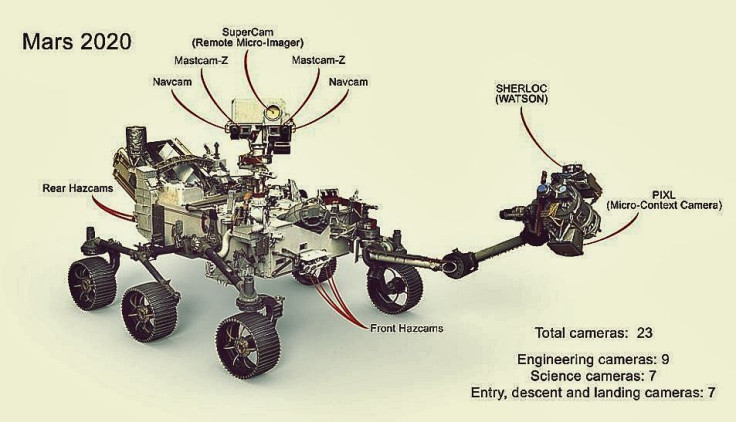NASA Mars 2020 Mission Update: Rover Capsule Assembled Ahead Of Launch

The ambitious NASA Mars 2020 rover mission, which will search for signs of ancient Martian life, reached another milestone with the assembly by the Jet Propulsion Laboratory (JPL) of the capsule that will keep the Mars 2020 rover secure on its seven month-long journey.
Announced in December 2012, the Mars 2020 mission will launch on July 17, 2020 and touchdown at the Jezero crater (which was once thought to have been flooded by water) on Feb. 18, 2021.
To speed up assembly of the Mars 2020 rover, JPL scientists made the frame of the Mars 2020 rover similar to that of the Curiosity rover, the most successful of all NASA’s Mars rovers. This allows the vehicle stacking process to be completed much easier. Vehicle stacking is a hyper-detailed plan for what goes inside the capsule where and when.
"One of our main jobs is to make sure the rover and all the hardware that is required to get the rover from here on Earth to the surface of Mars fits inside the payload fairing of an Atlas V rocket, which gives us about 15 feet [5 meters] of width to work with," David Gruel, assembly, test and launch operations (ATLO) manager for Mars 2020 at JPL, said.
"Stacking is an important milestone in mission development, because as good as our computer models are, we still need to put it together to show that the bolt holes line up and everything fits together.”
It’s no accident Mars 2020 stacks like the Curiosity rover. Curiosity's design serves as the basis for the Mars 2020 rover. Mars 2020, however, will carry different scientific instruments compared to Curiosity.
Curiosity is still operational. As of April 20, 2019, it’s been on Mars for 2,383 sols (2,448 total days) since landing on Aug. 6, 2012.

The stacking process includes both the real rover and a surrogate rover. JPL is testing the latter to make sure everything fits properly before using real flight hardware.
The next step in stacking is to check for loose bolts or attachment points. The stack will then spend a week inside of a thermal vacuum chamber simulating the space environment, to ensure the stack holds together during its long trek to Mars.
After stacking comes fitting the parachute nose cone. This vital piece of gear will protect the parachute as the Mars 2020 shell makes a fiery entry into Mars’ atmosphere. Once re-entry is accomplished, Mars 2020 will deploy the parachute to safely land on the Martian surface
All these minute tasks are necessary for Mars 2020 to fulfill its primary mission: search for signs of ancient Martian life, bringing it a step beyond Curiosity's many successful discoveries.
JPL also said Mars 2020 will set the groundwork for future rovers by stowing samples in sealed tubes a later mission will retrieve for better analysis on Earth.
Published by Medicaldaily.com



























